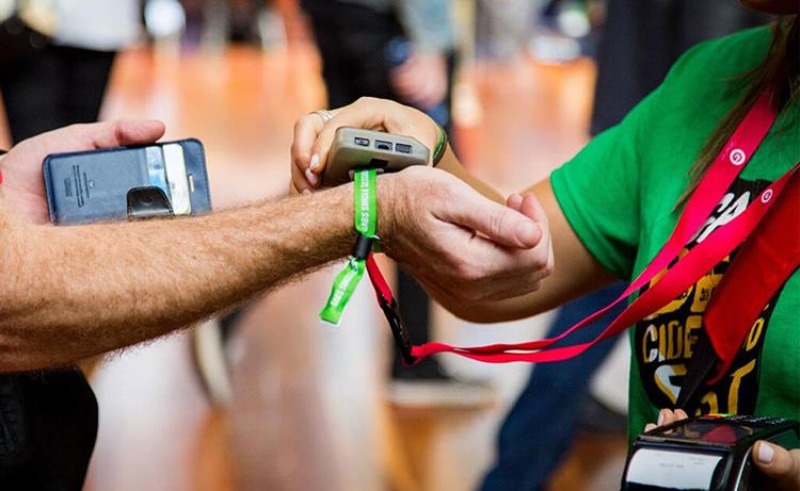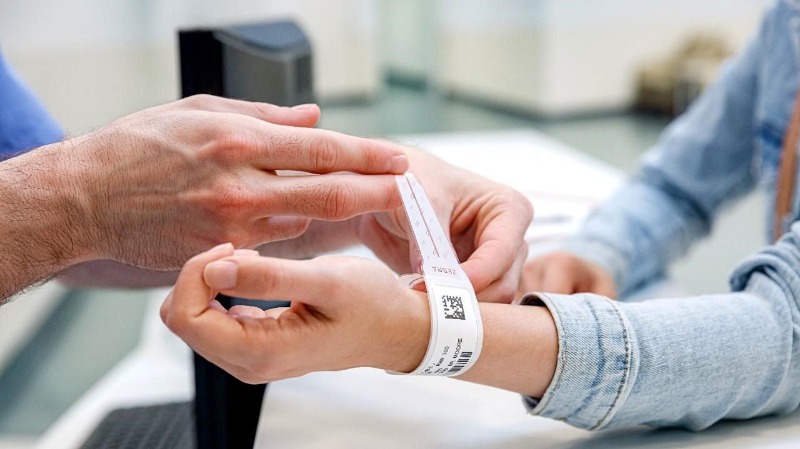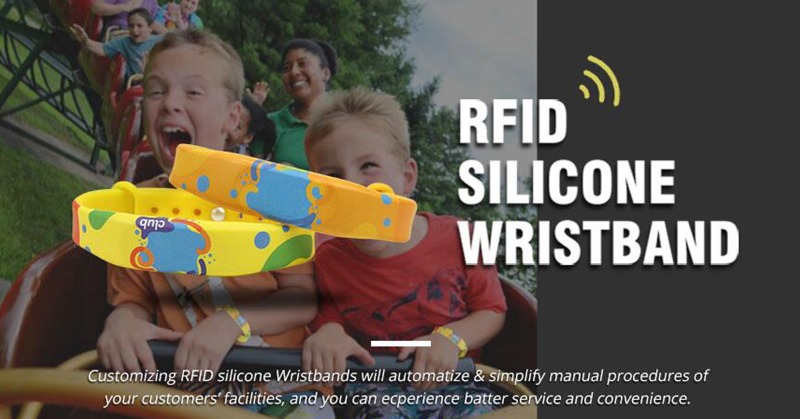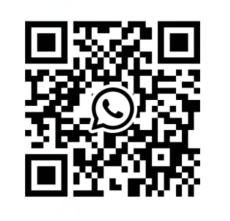
Introduction to RFID Wristbands
RFID wristbands are wearable devices that use wireless technology to store and transmit data. They consist of a small RFID chip and an antenna embedded in a durable, waterproof material like silicone or fabric. When scanned by an RFID reader, the wristband emits a unique identifier, enabling quick data retrieval.
These wristbands operate at different frequencies: LF (125 kHz), HF (13.56 MHz), and UHF (860-960 MHz). Each frequency has distinct applications—LF for access control, HF for payments, and UHF for long-range tracking.
How RFID Wristbands Work
Components of an RFID Wristband
An RFID wristband contains:
- Microchip: Stores a unique ID or user data.
- Antenna: Transmits signals to a reader.
- Encapsulation: Silicone, PVC, or fabric for durability.
Passive RFID wristbands rely on reader-generated electromagnetic waves for power, while active wristbands transmit signals over longer distances.
Communication Process
- Reader Activation: The RFID reader emits a radio signal.
- Data Transmission: The wristband’s antenna captures the signal, powers the chip, and sends back stored data.
- Authentication: The system verifies the ID and triggers actions (e.g., unlocking a door or processing a payment).
For example, Disney’s "MagicBand" uses UHF RFID to track visitor movements in parks with a read range of up to "10 meters".

Key Applications of RFID Wristbands
Events & Festivals
RFID wristbands streamline entry, cashless payments, and attendee tracking. At Coachella, over 500,000 RFID wristbandsreduced queue times by 40% and increased vendor sales by 25%.
Healthcare & Patient Monitoring
Hospitals use HF RFID wristbands to:
- Track patients in real-time.
- Prevent medication errors (e.g., matching wristband IDs to electronic records).
A Johns Hopkins study found RFID reduced patient misidentification errors by 50%.
Access Control & Security
Gyms, offices, and resorts deploy RFID wristbands for contactless entry. The Hilton Honors Digital Key uses NFC to let guests unlock rooms via their wristbands.
Cashless Payments
Major festivals like Tomorrowland process €2M+ daily transactions via RFID wristbands, cutting payment time to under 2 seconds per purchase.

Advantages Over Traditional Systems
Speed & Efficiency
- RFID scans take <0.5 seconds, vs. 5+ seconds for barcodes.
- No line-of-sight needed (unlike QR codes).
Enhanced Security
- Encrypted UIDs prevent cloning.
- 92% of hotels reported fewer security breaches after adopting RFID wristbands.
Data Analytics
Event organizers use wristband data to monitor crowd flow, peak hours, and popular vendors for future planning.
Future Trends
Integration with IoT & AI
Smart wristbands will sync with IoT devices for personalized experiences (e.g., adjusting room temperature upon entry).
Biometric Enhancements
Some prototypes embed heart-rate sensors.
Sustainability
Biodegradable RFID wristbands are gaining traction, reducing e-waste.

Conclusion
RFID wristbands combine convenience, security, and data-driven insights across industries. With advancements in IoT and materials, their adoption will keep growing—offering smarter, faster, and more sustainable solutions.
FAQ: RFID Wristbands
1. Are RFID wristbands secure?
Yes, they use encrypted data transmission, ensuring they cannot be cloned. Unlike magnetic stripes or barcodes, they require no physical contact, reducing wear and tear and the risk of fraud.
2. What is the difference between LF, HF, and UHF RFID wristbands?
- Low frequency (125 kHz): Short range (a few centimeters), used for access control.
- High frequency (13.56 MHz): Medium range (up to 1 meter), commonly used for payments.
- Ultra-high frequency (UHF) (860-960 MHz): Long range (up to 10 meters), used for event tracking.
3. Do RFID wristbands get wet?
Most RFID wristbands are waterproof (with silicone or PVC casing), making them suitable for use in places like swimming pools, festivals, and hospitals.
4. What is the lifespan of an RFID wristband?
Passive wristbands (without batteries) can last for several years. Active wristbands (with batteries) typically last 2-5 years, depending on usage.
5. Are RFID wristbands reusable?
Some are disposable (one-time use), such as paper RFID wristbands, while others can be reprogrammed for multiple uses, such as silicone wristbands.
6. Are there environmentally friendly RFID wristbands?
Yes! Biodegradable and recyclable options are emerging to reduce e-waste.
7. Where can I buy RFID wristbands?
[amy@mhgyjs.com] Contact Meihe for fast response, professional service, and customized designs.
Chat NOW
Scan to wechat :

Scan to Whatsapp :
